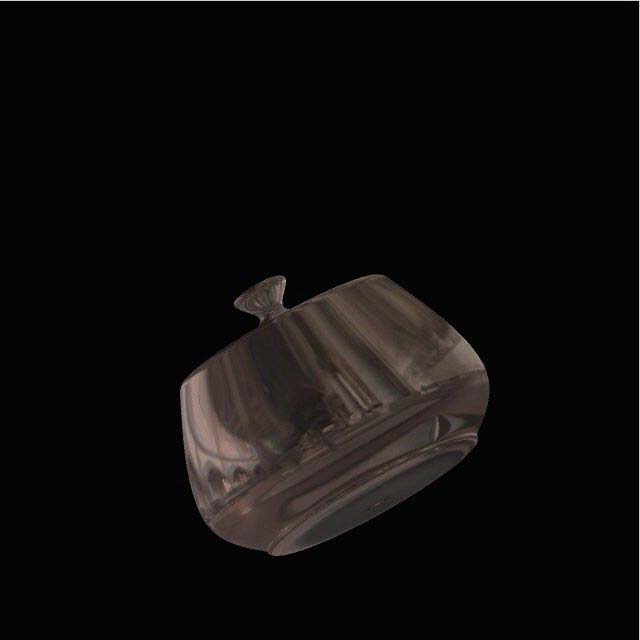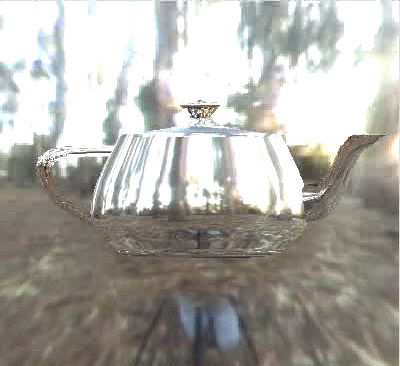Material from Motion:
Shiny or Matte?
Hartung, B., & Kersten, D. (2002). Distinguishing Shiny
from Matte.
Presented at Vision SciencieS, Sarasota, Florida.
Hartung, B., & Kersten, D. (2002). Distinguishing shiny
from matte [Abstract]. Journal of Vision , 2(7), 551a, http://journalofvision.org/2/7/551/,
DOI 10.1167/2.7.551.
This quicktime movie (4.6Mbytes) shows how motion can affect material appearance.
 |
The first half of the movie simulates a chrome teapot rotating in mid-air.
The appearance is what one might expect, that of a shiny chrome teapot.
But be patient. Half way through the movie, the reflection gets painted
on to the teapot making a "sticky reflection". The painted-on
pattern mimics what one would see in the reflection of a perfectly reflecting
chrome teapot. Now the body of the teapot appears more or less like a
painted matte object during the second half of the movie. Try stopping
the movie. The teapot reverts to a more shiny appearance.
|
Now with a croissant-shaped object:

Many observers report that this polygonal object seems to look transparent
rather than shiny-opaque.

And the last one shows the "wrong" optic flow, in which the environment
is moving about a different axis than the teapot.

The highlights at points of high curvature in this last one conflict to some
extent with the matte interpretation, and thus one can see these points as from
a shiny object. Also, note the lack of contact information (inter-reflections
are not modeled in this rendering) for the handle and spout.

Movies were created by Bruce Hartung in collaboration with Dan Kersten and
advice from Ted Adelson. The measured illumination map was obtained from http://www.debevec.org/Probes/.
This study was reported at the 2002 meeting of the Vision ScienceS Society
in Sarasota, Florida:
Hartung, B., & Kersten, D. (2002). Distinguishing Shiny from Matte.
Presented at Vision SciencieS, Sarasota, Florida.
For more on human perception of shiny objects, see also :
R.W. Fleming, R.O. Dror, and E.H. Adelson. How do Humans Determine Reflectance
Properties under Unknown Illumination? Ê Proceedings of the Workshop on Identifying
Objects Across Variations in Lighting at CVPR, Hawaii, December, 2001.
R. O. Dror, E. H. Adelson, and A. S. Willsky. Estimating surface reflectance
properties from images under unknown illumination. In SPIE Conference on Human
Vision and Electronic Imaging, San Jose, CA, 2001.
and
http://www.ai.mit.edu/people/rondror/Ronfiles/publications.htm
© 2003 Computational Vision Lab, University of Minnesota,
Department of Psychology.




